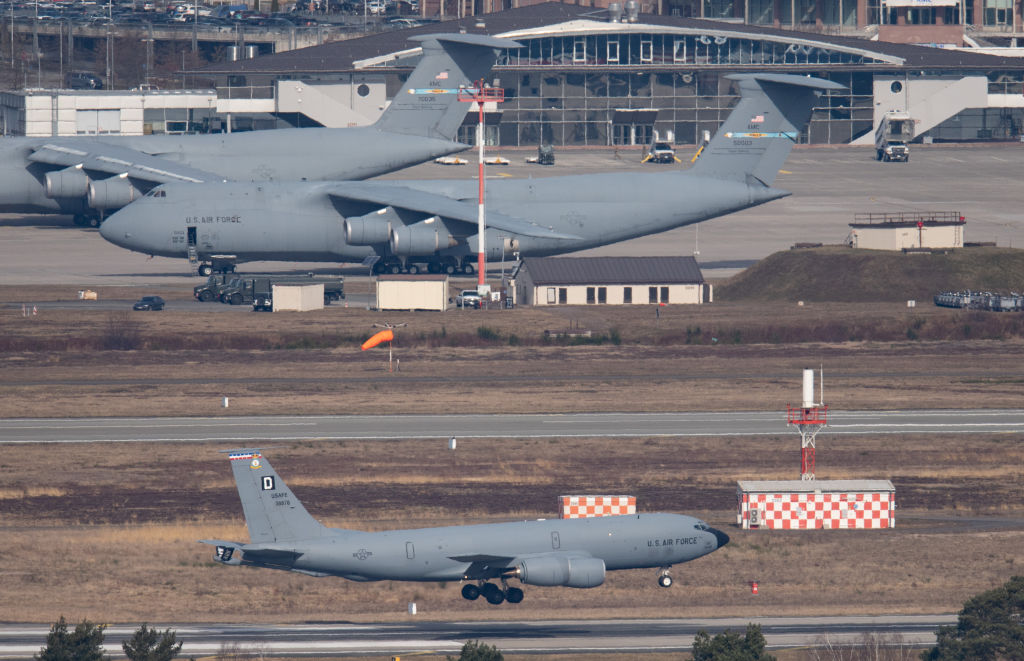If you want to know where the Pentagon’s real interest is, follow the money – the defense funding request. Conversely, following the money will also shed light on where the Defense Department isn’t as focused as it should be: China. Defense funding for the Indo-Pacific to deter and, if necessary, defeat the People’s Liberation Army (PLA) has fallen short of what the US Indo-Pacific Command (USINDOPACOM) believes necessary and has requested. Additionally, recent exercises and studies have highlighted the challenge of deploying and sustaining a fighting force in the region.
China Preparing for War Creates Challenges for the US
As China demonstrates with each passing year that it is gearing up for war, the US faces some genuine resource and logistics challenges. The problem breaks down more simply as having the right stuff in the right places at the right time. In their recent article for Defense One, former chairman of the House Armed Services Committee Mac Thornberry and senior associate at the Center for Strategic and International Studies Kimberly Lehn make the case that, though Congress authorized funding for the Pacific Deterrence Initiative (PDI) in 2021 as a bulwark against Beijing’s escalating warlike rhetoric, Indo-Pacific Command’s requests have gone under-funded by the Biden administration’s annual budget requests. The authors explained:
“In its 2024 budget proposal, the Administration requested $8.1 billion for PDI, far less than INDOPACOM’s assessment that $15.4 billion would be needed. Congress bumped that up by $5 billion—a 47 percent increase—in the 2024 NDAA signed into law by President Biden last month…Year after year, the shortfalls between the needs and the funding to meet those needs continue to accumulate, and it is becoming increasingly difficult to catch up within any timeline that matters.”
Making this point, the authors present a chart that shows a disparity between FY2022 and FY2028, showing a difference in what USINDOPACOM determined is required and what the Biden budget request sent to Congress, coming up an average of $11 billion short annually.
 Among the critically needed resources are a permanent integrated air missile defense system on the island of Guam to defend against ballistic, cruise, and hypersonic missiles; munitions including various precision-guided anti-ship and anti-air missiles, and Mark 48 Advanced Capability Torpedoes. All these munitions are “for the protection of forward-deployed forces against enemy countermeasures designed to push the United States out of the region,” the authors explained. Thornberry and Lehn conclude: “Simply, time is running out. The pace of China’s aggressive actions in the region and military modernization buildup is accelerating at a rapid pace…Our military must have the credible strength to project power in the Indo-Pacific, protect our forces, and meet or treaty obligations.”
Among the critically needed resources are a permanent integrated air missile defense system on the island of Guam to defend against ballistic, cruise, and hypersonic missiles; munitions including various precision-guided anti-ship and anti-air missiles, and Mark 48 Advanced Capability Torpedoes. All these munitions are “for the protection of forward-deployed forces against enemy countermeasures designed to push the United States out of the region,” the authors explained. Thornberry and Lehn conclude: “Simply, time is running out. The pace of China’s aggressive actions in the region and military modernization buildup is accelerating at a rapid pace…Our military must have the credible strength to project power in the Indo-Pacific, protect our forces, and meet or treaty obligations.”
Getting to the Indo-Pacific Region Is Critical for Deterrence
Not having the necessary resources readily available in the Indo-Pacific region is one thing; sustaining and replenishing existing stores is another. The problem of distance bridging the Pacific Ocean to move warfighter weapons, equipment, and supplies is the most problematic. To understand the logistics challenges associated with a conflict in the Pacific, consider moving ground and air units from West Coast bases in the US, like Travis AFB near San Francisco, to forward staging bases like Kadena AB, Japan (5,365 nautical miles), or Guam (5,111 nautical miles). Initially, troops and their firepower will be delivered by air. Speed is of the essence. However, roll-on, roll-off and bulk-cargo ships will bring in between 80% and 90% of all the warfighting heavy equipment, tanks, armored personnel carriers, artillery, and ammunition containers. If every piece of cargo were on board the vessels, the time from the West Coast to the region for offloading would be, at best, 16 days using an average speed of 14 knots. Warfighting weapons, ammunition, ground combat troops, and all the support for the first to fight will go by air to blunt the initial PLA attacks.
Historically, there has never been a time when the US has had the luxury of more airlift assets than requirements during deployment, sustainment, and redeployment of forces during a contingency. The US Air Mobility Command operates three basic types of airlift aircraft. Large, outsized cargo-capable C-5 Galaxies, outsize cargo-capable C-17 Globemaster IIIs with short field capability, and the venerable C-130J Hercules capable of carrying oversized cargo are the military cargo planes available to the US. C-5s first came into the airlift inventory in the early 1970s with a total procurement of 131. The last B-model was delivered in 1989. There are 52 remaining in the inventory, not all dedicated to military airlift. There are only 223 C-17s, and the production line has been closed for years. Of the 500 C-130s available for operations a few years ago, fewer than 300 remain operational. “During a Senate Armed Services Airland subcommittee hearing Tuesday [June 22, 2021], the Air Force reiterated budget plans to reduce its C-130 fleet to 255 aircraft in the near future from about 300 currently,” Oriana Pawlyk wrote for Militay.com in June 2021.
Cargo that can be palletized is carried on all US military aircraft and commercial freighter aircraft (Boeing 747s and 767s, for example) participating in the Civil Reserve Air Fleet (CRAF). The CRAF flies regular military air cargo services under contract during peacetime and expands to augment military airlift missions during conflicts.
Military Cargo Aircraft Running Out of Useful Life
Military cargo aircraft are flying more, and their useful life is being reduced. Furthermore, “… C-17s and C-5Ms suffer from parts obsolescence as component suppliers no longer make a range of parts for the aircraft or are out of business,” National Defense reported. The Air Force doesn’t see a replacement cargo aircraft coming into the inventory until the 2040s. That will make the first lot of C-17s delivered 50 years old. There are older US Air Force aircraft like the early fifties-era B-52 bomber, but most can reduce the number of hours flown to preserve aircraft life. Air Mobility Command does not have the flexibility to reduce flying hours, since cargo aircraft fly real-world operational missions daily, delivering essential cargo around the globe.
Having enough resources and getting those resources to where they are needed are just two factors in being ready to engage China if necessary. The more the PLA grows in combat capability, the more confident it becomes of a successful outcome in a military engagement to extend China’s influence among its neighbors. The US must have enough capability on the ground to deter the Chinese Communist Party from such a notion. America also needs the ability to bring combat forces to bear rapidly and the sustainment capability to keep them fighting.
The views expressed are those of the author and not of any other affiliation.




